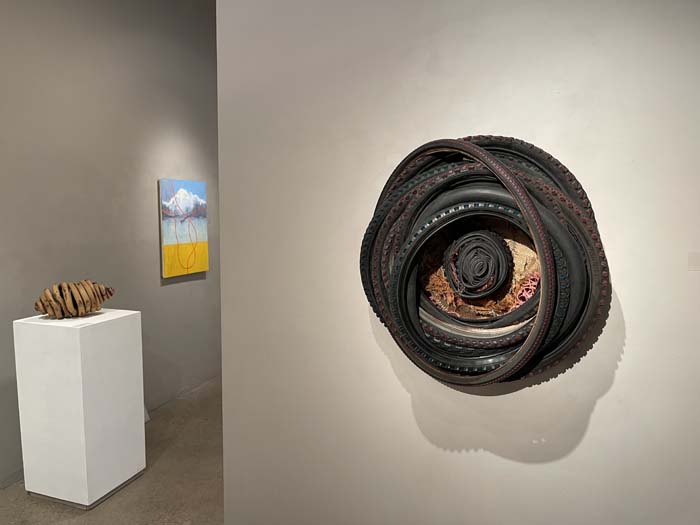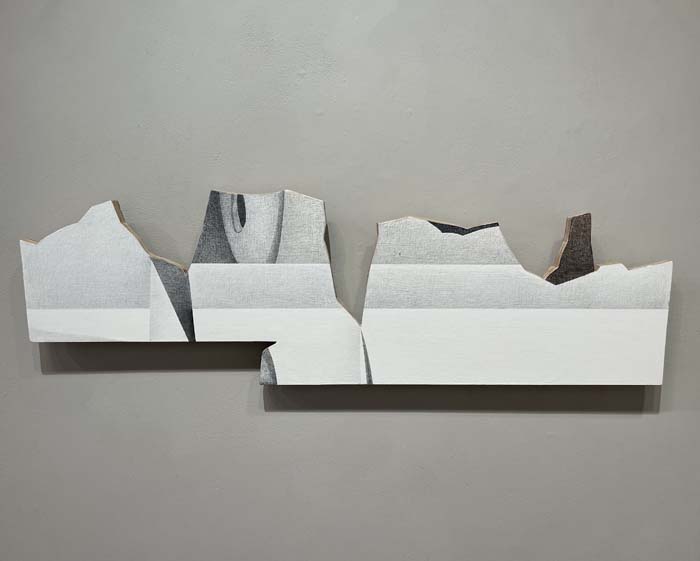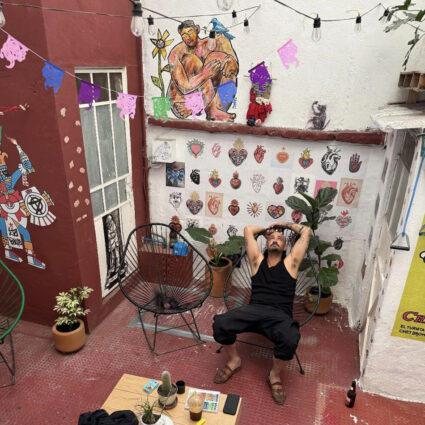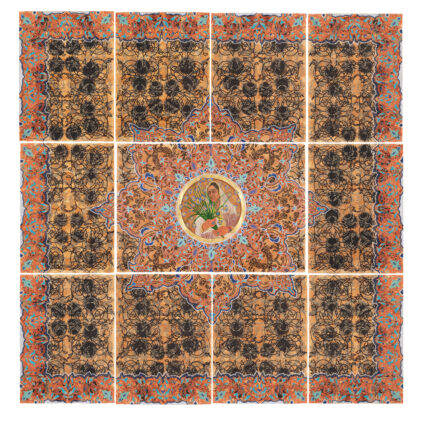Kim Arthun, Michael Bisbee, and Judy Richardson are New Mexico artists connected by their engagement with land and landscape.
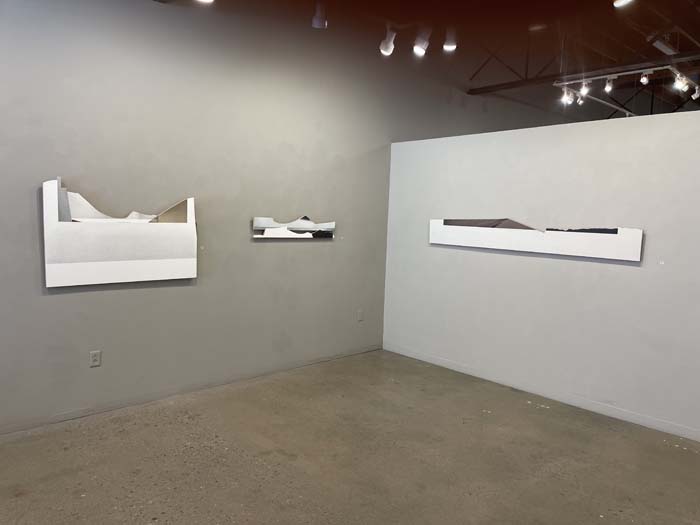
Kim Arthun: Landforms
Michael Bisbee and Judy Richardson: Rough Idea
October 14–November 19, 2022
Exhibit 208, Albuquerque
Land is the main existential fact of our existence. Without it, there is no gravity or movement, no shadows to be cast by the light of a distant sun that also loans light to the moon. We walk in a cosmic scene, yet, on a daily basis, the land we live on can seem merely tangential—you know, with all those important things to do and errands to run.
In Albuquerque, three artists take a step back from distraction and offer their individual takes and topographies at Exhibit 208. The main gallery houses local artist Kim Arthun’s Landforms, while two New York-by-way-of-Magdalena artists, both friends of mine—Judy Richardson and Michael Bisbee—occupy the other space of the gallery with their exhibition Rough Idea.
Arthun mines fashion magazines—better paper and ink—for the adrets and ubacs of his masterfully executed collages, which lean into landscape the way a No. 11 X-Acto blade slices into finesse, cutting away the focal point of any given page and using what’s left in the peripheries. His palette is that of the land itself, tones of sand, earth, and ice, even wind; the tectonic forces that formed the mountains east of Albuquerque are also the energies that build visual metaphor in the artist’s mind. Sometimes the collages inform cut-out plywood surfaces built up with marks that employ something that is not exactly grisaille, miming landscape with something that is not really realism. Albuquerque native Arthun is a walker/hiker/climber and knows the difference between imagination and experience in the wild. The elegance that is a driving force in his work is derived as much from his life-long exposure to a single landscape, the Sandia Mountains, as from anything he may have learned studying art.
Bisbee, who lives next to the base of Magdalena Mountain, tends toward juxtaposition in his paintings. They frequently feature meandering lines that swerve to confound any notions of leading the eye, but which do go straight to the part of a viewer’s experience that might fall within notions of wondering as much as wandering. Like the trace of a trail that was walked looking for something on a hand-held GPS, these lines potentially switch the viewer’s point of view from the frontal to the aerial, revealing where one has been, which may be nowhere, providing a pleasing vertigo anchored by the horizon that is the connecting element from one painting to the next. Matters not that the subject (behind the lines? between them?) of the piece may be cloud, mountain, scratch and scribble, entoptic lattice, or just freely given lusciousness. The looping networks of lines are frequently red, orange, or yellow, the colors of warning, but are always battened to the edges of the paintings as if to reassure a viewer of their purpose.
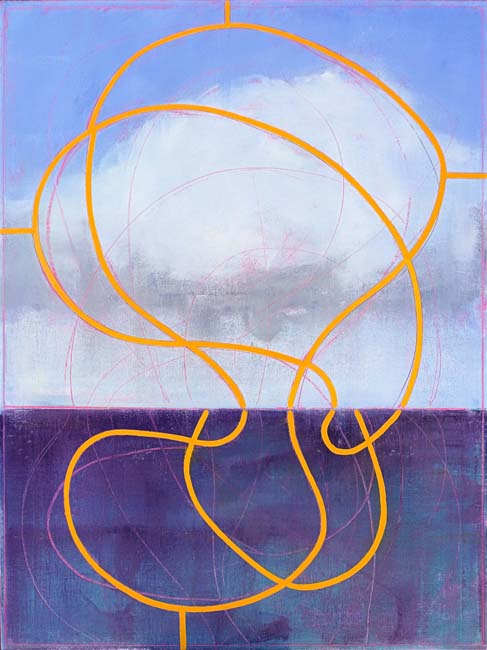
Richardson’s pedestal and wall-mounted sculptures are sometimes additive, sometimes subtractive, but always derived from found materials. One hand may be wrapping, twisting, binding, and grappling, while the other is grinding, carving, sanding, and removing. She is an artist whose satisfaction in manipulating materials is matched by her joy in finding them—a dual delight echoed by her tendency to encircle a center that reads like a treasure in the midst of stuff that might commonly be regarded as trash. High desert blossoms and pods come to mind, but this work is not a stand-in for anything, nor is the point about transformation or salvation, though salvage does come into play. No, this work is not an ugly duckling story—Richardson loves discarded things on their own terms and loves equally to play with them. In the end, it’s all about the life-line of stuff—maybe a bit of sandal found in an arroyo while walking or a second-hand bicycle tire, made “used” by the artist’s own bike riding.
These three artists are each doing work that feeds one off of the other, inviting engagement with the land of New Mexico, which feeds us all.
The exhibitions Landforms and Rough Idea continue until November 19, 2022, at Exhibit 208, 208 Broadway SE, Albuquerque.
